The Insider's Guide to Self-drilling Rock Bolts
Time:2023-06-09From:sinorock View:
Rock support is an essential aspect of modern engineering and construction projects, particularly those involving tunnels, mines, and underground excavations. For centuries, engineers have sought effective methods to reinforce rock structures and mitigate potential hazards. Among the various techniques employed, rock bolts have emerged as a crucial solution for providing stability and preventing rock falls. While traditional rock bolts have played a significant role in rock support systems, a groundbreaking evolution in this field has come in the form of self-drilling rock bolts.So what are the self-drilling rock bolts? How do they differ from ordinary rock bolts? Where to use them? Why is better to choose them? ... Let's uncover the mystery of the self-drilling rock bolt.
Phylogeny of Rock Bolts
 The concept of using bolts to stabilize rock formations dates back several centuries. Early civilizations recognized the need for rock support, employing wooden beams or timber as makeshift solutions. However, it was during the late 19th century that steel rock bolts were first introduced in the mining industry, marking a significant advancement in rock reinforcement techniques. These early iterations involved drilling holes into the rock and then inserting steel rods, securing them with grouting or resin.
The concept of using bolts to stabilize rock formations dates back several centuries. Early civilizations recognized the need for rock support, employing wooden beams or timber as makeshift solutions. However, it was during the late 19th century that steel rock bolts were first introduced in the mining industry, marking a significant advancement in rock reinforcement techniques. These early iterations involved drilling holes into the rock and then inserting steel rods, securing them with grouting or resin.Over time, rock bolt technology evolved, with engineers experimenting with different materials and installation methods to enhance their effectiveness. The introduction of fully threaded rock bolts in the mid-20th century revolutionized the industry, providing increased resistance to shear and tensile forces. These traditional rock bolts, while effective, required the use of specialized drilling equipment and multiple steps for installation, resulting in time-consuming and labor-intensive processes.
The Emergence of Self-Drilling Rock Bolts
In recent decades, the demand for more efficient and cost-effective rock support solutions has driven innovation in the field. Enter self-drilling rock bolts – a game-changing advancement that combines drilling and anchoring functionalities into a single integrated system. Unlike their predecessors, self-drilling rock bolts eliminate the need for pre-drilling, streamlining the installation process and reducing overall project timelines.
 Self-drilling rock bolts are designed to be installed with simplicity and speed, offering significant advantages in terms of both time and cost. These innovative bolts incorporate a hollow core, allowing them to be drilled directly into the rock using specialized handheld or mechanized equipment. As the bolts are driven into the rock, they simultaneously cut through and displace the surrounding material, creating a threaded pathway for themselves. Once fully installed, the hollow core facilitates grout injection to provide additional reinforcement, ensuring a secure and stable anchoring system.
Self-drilling rock bolts are designed to be installed with simplicity and speed, offering significant advantages in terms of both time and cost. These innovative bolts incorporate a hollow core, allowing them to be drilled directly into the rock using specialized handheld or mechanized equipment. As the bolts are driven into the rock, they simultaneously cut through and displace the surrounding material, creating a threaded pathway for themselves. Once fully installed, the hollow core facilitates grout injection to provide additional reinforcement, ensuring a secure and stable anchoring system.The Differences between Traditional Rock Bolts and Self-Drilling Rock Bolts
Installation Process
Traditional Rock Bolts: Traditional rock bolts require the pre-drilling of holes into the rock using specialized drilling equipment. After drilling the holes, steel rods or bars are inserted into the holes, and grout or resin is used to secure them in place.Self-Drilling Rock Bolts: Self-drilling rock bolts, as the name suggests, combine the drilling, grouting and anchoring functions into a single integrated system. These bolts have a hollow core and are designed to be drilled directly into the rock using handheld or mechanized equipment. As the bolts are driven into the rock, they create a threaded pathway for themselves, eliminating the need for pre-drilling. Therefore, the construction process of self-drilling anchor bolts become exceptionally easy, requiring only four steps.
1. Pre-construction preparation: Check whether the functions of the drilling rig are normal, whether the drill bit and the hollow anchor bar are broken, and whether the hollow anchor bar is free from damage. After making sure there are no problems, rotate the hollow anchor bar to be used with the drill bit;
2. Drilling and grouting: Connect the hollow anchor bar and grouting pipe to the drilling rig by rotating the grouting adapter and grouting during the drilling process, so that drilling and grouting are completed simultaneously;
3. Hollow anchor bar extension: If the length of a single self-drilling anchor bar does not reach the design drilling depth, it can be connected with a coupler to meet the design requirements;
4、Installation of plate and nut: After grouting is completed, install plate and nut in the exposed part of self-drilling hollow anchor bars against the construction surface in order to ensure the anchoring effect.
Efficiency
Traditional Rock Bolts: The installation of traditional rock bolts can be a time-consuming and labor-intensive process. Pre-drilling requires additional equipment, and multiple steps are involved in securing the bolts in place. This can result in longer project timelines, especially for larger-scale applications.Self-Drilling Rock Bolts: Self-drilling rock bolts offer significant efficiency advantages. The elimination of pre-drilling saves time and reduces the complexity of the installation process. The self-drilling capability allows for faster and more streamlined installation, ultimately leading to shorter project timelines and increased productivity.
Effectiveness
Traditional Rock Bolts: Traditional rock bolts provide reliable rock support and reinforcement. Once installed and secured with grout or resin, they offer resistance against shear and tensile forces, enhancing the stability of the rock structure. However, the effectiveness of traditional rock bolts can be influenced by the quality of the drilling and grouting processes.Self-Drilling Rock Bolts: Self-drilling rock bolts also provide robust rock reinforcement. Their threaded design allows for excellent anchoring and load-bearing capacity. The hollow core facilitates grout injection, ensuring enhanced bonding with the surrounding rock mass. This results in a more secure and stable anchoring system, minimizing the risk of rock falls and other hazards.
The Consist of Self-Drilling Rock Bolts
 Self-drilling rock bolts consist of several key components that work together to provide effective rock reinforcement. The composition of self-drilling rock bolts typically includes the following elements.
Self-drilling rock bolts consist of several key components that work together to provide effective rock reinforcement. The composition of self-drilling rock bolts typically includes the following elements.Hollow anchor bar
The hollow anchor bar is the main structural component of the self-drilling rock bolt. It is typically made of high-strength steel, which provides the necessary load-bearing capacity and durability. The hollow anchor bar is designed with a hollow core, allowing for the drilling, grouting and anchoring functions to be integrated into a single unit.Another feature of the hollow anchor bar is the threaded design along the length of the bar. These threads are essential for creating a secure and stable anchoring system. As the bolt is driven into the rock, the threads cut through and displace the surrounding material, forming a threaded pathway that enhances the bonding between the bolt and the rock mass. This threaded design can also be cut and extended at will, making it easier and more convenient to operate at the construction site. This type of anchor bar can easily meet the construction needs of different scenarios, especially some scenarios where construction space is limited.
 The hollow anchor bar of the self-drilling rock bolt is divided into two types according to the thread type: R-type thread is continuously corrugated, and T-type thread is irregularly trapezoidal. The R-type thread is designed according to ISO 10208 standard and is mainly used for small diameter hollow anchor bars; the T-type thread is designed according to the fully thread bar, with a deeper thread depth than the R-type and a larger bonding area with concrete.
The hollow anchor bar of the self-drilling rock bolt is divided into two types according to the thread type: R-type thread is continuously corrugated, and T-type thread is irregularly trapezoidal. The R-type thread is designed according to ISO 10208 standard and is mainly used for small diameter hollow anchor bars; the T-type thread is designed according to the fully thread bar, with a deeper thread depth than the R-type and a larger bonding area with concrete.Usually, the bonding friction of the same type of T-thread is more than twice that of the R-thread, and T-thread anchors are more often used in miniature piles.
Drill Bit
The self-drilling capability of these bolts is facilitated by a specially designed drill bit at the front end. The drill bit is typically made of robust materials, such as 42CrMo, etc... The medium carbon tempering type low alloy structural steel, can withstand the drilling forces and effectively penetrate the rock. The drill bit incorporates cutting edges and flutes to aid in the drilling process, allowing the bolt to create its own pathway as it advances into the rock. The biggest difference between this drill bit and other rock bolt bits is that it is disposable. Once the drill bit is drilled in with the hollow anchor system, it is never pulled out again. In this way the replacement process is eliminated and the construction method is simplified..jpg) There are many types of drill bits, the common shapes are Hardened Cross-cut Drill Bits (EX), Tungsten Carbide Cross-cut Drill Bits (EXX), Clay bits, Hardened Button Drill Bits (ES), and Tungsten Carbide Button Drill Bits (ESS). Each type of drill bit is available in a wide range of outer diameter sizes, allowing the bit to be selected according to different geological conditions and hole size requirements.
There are many types of drill bits, the common shapes are Hardened Cross-cut Drill Bits (EX), Tungsten Carbide Cross-cut Drill Bits (EXX), Clay bits, Hardened Button Drill Bits (ES), and Tungsten Carbide Button Drill Bits (ESS). Each type of drill bit is available in a wide range of outer diameter sizes, allowing the bit to be selected according to different geological conditions and hole size requirements.Bearing Plate
Bearings Plate also called Plate -- formed load-bearing plate with a central hole. The function of the Plate: to apply anchoring force to the surrounding rock, transfer stress, improve the end force and enhance the reinforcement effect..jpg)
The bearing plate is installed at the end of the hollow anchor bar, between the nut and the rock formation. According to the shape, it can be divided into the domed plate and the flat plate. Generally, the domed plate is used for soil nail application and the flat plate is used for mini-pile application.
Coupler
Self-drilling rock bolts often include a coupling mechanism at one end. The coupler allows for the connection of multiple hollow anchor bars, enabling the formation of longer and more continuous rock reinforcement systems. The material of the coupler is usually high-quality metal, such as carbon steel, stainless steel, etc., which is very strong and durable.
Self-drilling rock bolts are usually connected to the couplers using a threaded structure, which can effectively increase the connection strength of the anchoring system. The mechanical properties of the couplers and the hollow anchor bars are equal and do not affect the energy transfer. The coupler ensures proper alignment and load transfer between adjacent hollow anchor bars, enhancing the overall stability and performance of the rock support system.
Nut
Nuts used on rock bolts are large and heavy compared to conventional nuts. It is a device with internal threads that transmits the anchoring force from the hollow anchor bar to the plate and locks the plate in place, usually as the final step in the construction of a self-drilling anchor system.The nut installed at the end of the hollow anchor bar prevents deformation of the rock by applying preload to transfer the anchoring force from the hollow anchor bar to the plate and compressing the plate to the rock face.
The nuts can be divided by name into three categories: Hex Nuts, Domed Nuts, and Spherical Collar Nuts. The hex nuts are mainly used in conjunction with flat plates for applications where the anchor is perpendicular to the support surface or at a small angle. Domed nuts and spherical collar nuts are mainly used in conjunction with domed plates when the anchor is at an angle to the support surface. In this case, a larger bore plate is used, the domed nut/ spherical collar nut can form a line of contact with the bore of the plate. If hex nuts are used, the contact will be incomplete and the nut may fall into the inner hole of the plate, affecting the support.
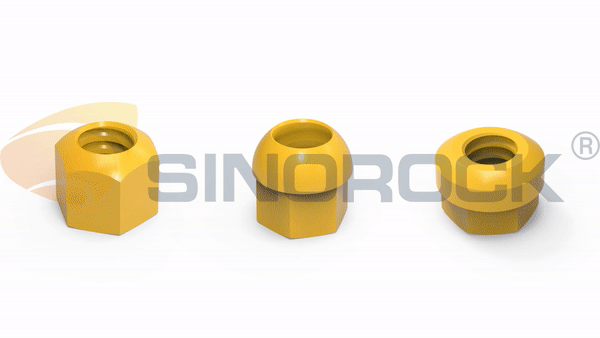
Centralizer
The centralizer's main function is to maintain the proper alignment and position of the anchor bolt during installation.It keeps the slender hollow anchor bar running smoothly when the hollow anchor bar is rotating at high speed in the hole, so that the axis of the drill bit is as close as possible to the centerline of the drill hole.Without the centralizer, the anchor bolt may deviate from its intended location in challenging ground conditions and affect the anchoring effect and stability of the structure. Besides, the centralizer also has a centering effect and can ensure the thickness of cement paste ≥20mm.
.png)
The principle of using centralizer: In general terrain, it is recommended to use at least one centralizer every 3 meters. In complex terrain, it is recommended to shorten the spacing and use a centralizer every 1.5m or 2m.
Selection Method of Self-Drilling Rock Bolts
The selection of self-drilling rock bolts involves considering various factors to ensure their suitability for a particular rock support application. Here are some key aspects to consider when choosing self-drilling rock bolts:Rock Conditions:
Assessing the geological properties of the rock mass is crucial for selecting the appropriate self-drilling rock bolts. Factors such as rock type, strength, stability, and water content should be evaluated.In addition to this, it is necessary to determine whether the rock conditions faced can be easily formed into a hole. If the construction process basically does not encounter collapsed holes or if the geology is difficult to form the hole; then ordinary steel bars or strands can be used. This way the upfront construction cost and efficiency are better than the self-drilling rock bolts.
If it is difficult to form a hole, the advantage of self-drilling rock bolts while drilling and grouting construction process will be very obvious, because the self-drilling rock bolt is directly drilled, grouted, and anchored at one time, without withdrawing in the middle, with good grouting effect, and can be bonded to the surrounding rock, with higher bearing capacity.
Design Requirements:
Consider the specific design requirements of the project, and issue the project design proposal. The design information often contains information on geological conditions, specific project locations, design plans and general drawings. And the drawings about the self-drilling rock bolt include factors such as the required bolt length, diameter, thread profile and percentage elongation. The load capacity, corrosion resistance, and compatibility with the desired grouting materials should also be considered when designing.Two key points must be noted in the design: Bolt Material & Bolt Length and Diameter.
Bolt Material
The material composition of the self-drilling rock bolts is crucial for their performance and longevity. Common materials include high-strength steel or alloys with excellent tensile and yield strength properties. Factors such as corrosion resistance, durability, and compatibility with the rock conditions should guide the selection of the bolt material.
There are three anticorrosion methods for self-drilling rock bolts, hot-dip galvanizing anticorrosion, epoxy coating anticorrosion and duplex coating anticorrosion. In specific projects, the appropriate anticorrosion process can be selected according to the geological conditions of the project.
Bolt Length and Diameter
The length and diameter of the self-drilling rock bolts depend on the specific project requirements. Factors such as the depth of the rock mass, the anticipated load forces, and the desired level of reinforcement will influence the selection. Longer bolts may be necessary for greater rock cover, while thicker bolts can provide increased load-bearing capacity. Depending on the project, additional accessories such as couplers and centralizers are required.If there are no design drawings for self-drilling rock bolts, you can also find out the design of the original rock bolts or reinforcement first, such as drilling depth, drilling diameter, and anchorage force requirements.
Of course, it is recommended to choose a professional self-drilling rock bolt manufacturer for this step, so that the manufacturer to select the self-drilling anchor for the customer based on the stratigraphic conditions and the rich experience, and to design and provide the drawings accordingly, which can not only save a lot of time but also be more professional and comprehensive.
Installation Method:
Consider the available equipment and installation method for the self-drilling rock bolts. Ensure that the selected bolts are compatible with the drilling equipment and techniques being used on the project.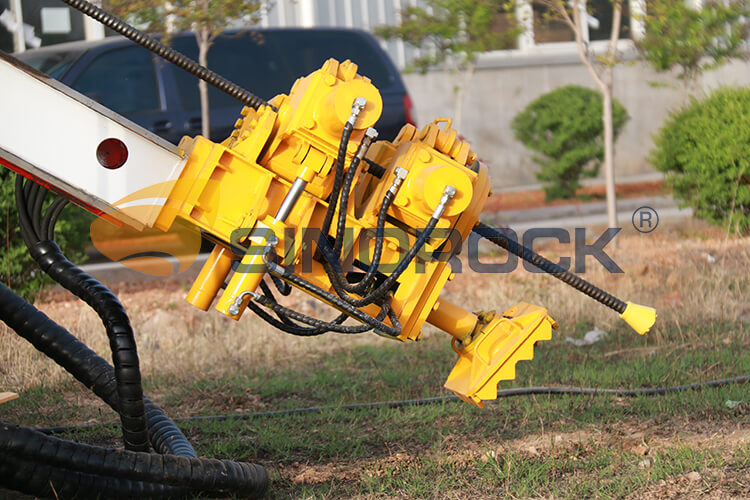
The larger investment in the project is the construction equipment, and if the equipment is already available, the anchor selection needs to be based on the equipment. Commonly used equipment include down-the-hole drill, truck-mounted rigs, three-boom drift-jumbo, hand-held rock drill etc. If you don't know the equipment classification, knowing the manufacturer and equipment model will allow you to know the parameters of the equipment such as stroke, compensation stroke, output end thread specifications, etc. These are used to determine the length of the adapted self-drilling hollow anchor bar and the selection of the coupler.
Quality Assurance:
Select self-drilling rock bolts from reputable manufacturers that adhere to quality standards and have a track record of providing reliable products. Here are some factors to consider in this regard:First, looking for companies that have a solid track record and a long-standing presence in the industry. Next, ensure that the manufacturer follows recognized quality standards and guidelines for the production of self-drilling rock bolts. And then, the prioritizing quality, technical support, certifications, and warranties will help ensure that you receive reliable products that meet the required standards for your specific project.
Cost Considerations:
Evaluate the cost-effectiveness of the self-drilling rock bolts while considering the overall project budget. Balance the upfront costs of the bolts with their long-term performance and durability to ensure value for money.Applications of Self-Drilling Rock Bolts
Self-drilling rock bolts find a wide range of applications in various industries where rock reinforcement and stabilization are necessary. The versatility, efficiency, and effectiveness of these bolts make them a valuable solution for enhancing rock stability in various industries, ensuring the safety of workers and infrastructure in challenging geological environments. Some key applications of self-drilling rock bolts include:
Underground Mining
Self-drilling rock bolts are extensively used in underground mining operations. They provide essential support to tunnel roofs, walls, and excavated areas, enhancing the overall safety and stability of the mine. The self-drilling capability of these bolts makes them particularly suitable for quickly reinforcing unstable rock formations in mining tunnels.Tunneling and Underground Excavations
Self-drilling rock bolts are employed in the construction of tunnels, subways, and other underground excavations. They reinforce the rock mass, preventing collapses and ensuring the integrity of the structures. The efficient installation process of self-drilling rock bolts significantly reduces the time required for rock reinforcement during tunneling projects.Civil Engineering and Construction
In civil engineering projects, self-drilling rock bolts are used to stabilize slopes, rock cuts, and retaining walls. They provide crucial support in areas prone to landslides, rockfalls, or ground instability. Self-drilling rock bolts are also employed in the construction of dams, bridges, and other infrastructure projects where rock reinforcement is required.Geotechnical Engineering
Self-drilling rock bolts are utilized in geotechnical engineering applications, such as soil nailing and ground stabilization. They provide effective reinforcement in areas with challenging soil conditions, including loose or fractured rock, or in areas prone to erosion. These bolts are commonly used in slope stabilization projects, securing the stability of hillsides and preventing landslides.Caverns and Underground Storage
Self-drilling rock bolts are employed in the construction of underground storage facilities, such as storage caverns or repositories for hazardous materials. They provide essential reinforcement to ensure the stability and safety of the underground storage structures, preventing potential collapses or breaches.Rockfall Protection Systems
Self-drilling rock bolts play a crucial role in rockfall protection systems. They are used in combination with other structural components like wire mesh, rockfall barriers, or rockfall fences to create a comprehensive protection system. The bolts anchor the protective structures to the rock mass, preventing the dislodgement and movement of unstable rocks.Advantages of Using Self-Drilling Rock Bolts in Construction Projects
Using self-drilling rock bolts in construction projects offers several advantages over traditional rock reinforcement methods.Time and Labor Savings
One of the primary advantages of self-drilling rock bolts is their efficient installation process. By combining drilling and anchoring functions into a single unit, these bolts eliminate the need for pre-drilling, saving significant time and reducing labor requirements. The simplified installation process allows for faster project completion and increased productivity.Streamlined Installation
Self-drilling rock bolts simplify the overall installation process. The integrated design eliminates the need for specialized drilling equipment, reducing the complexity of operations. With self-drilling rock bolts, contractors can achieve rock reinforcement quickly and with greater ease, minimizing disruptions and delays in construction projects.Enhanced Safety
Self-drilling rock bolts contribute to improved safety on construction sites. Their rapid installation reduces workers' exposure to hazardous conditions associated with drilling, such as flying rock fragments and vibrations. The efficient installation process also minimizes the time spent in potentially unstable areas, reducing the risk of accidents or rockfall incidents during construction.Versatile Application
Self-drilling rock bolts can be used in a wide range of geological conditions and construction projects. They are effective in various rock types, including hard, soft, and fractured formations. Their adaptability makes them suitable for applications in underground mining, tunneling, civil engineering, and geotechnical projects, providing reliable rock reinforcement in diverse environments.
Increased Load-Bearing Capacity
Self-drilling rock bolts are designed to provide high load-bearing capacity and excellent tensile strength. Their threaded design ensures a secure and stable anchoring system, enhancing the overall stability of rock structures. This increased load-bearing capacity makes self-drilling rock bolts ideal for supporting heavy loads and maintaining the integrity of the construction project.Grouting Efficiency
The hollow core of self-drilling rock bolts facilitates grout injection, enabling efficient bonding with the surrounding rock mass. The grout fills the voids between the bolt and the rock, providing additional reinforcement and enhancing the overall stability of the system. This efficient grouting process ensures optimal load transfer and improved long-term performance of the rock reinforcement system.Cost-Effective Solution
While self-drilling rock bolts may have higher upfront costs compared to traditional rock reinforcement methods, their time-saving benefits and increased productivity contribute to overall cost savings. The reduction in labor hours, equipment requirements, and project timelines can lead to substantial cost efficiencies in construction projects.
latest news
-
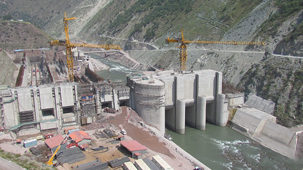
- What Are the Applications of SDA Bolts in Hydropower Stations?
- Time:2025-08-21From:This Site
- Learn how self-drilling anchor bolts enhance slope stability, tunnel support, and dam reinforcement in complex geological conditions at hydropower stations. Optimize hydropower projects with efficient, cost-effective, and eco-friendly solutions.
- View details
-
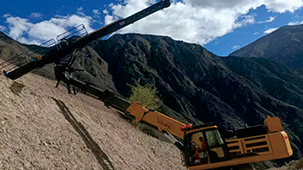
- Slope Stabilization with SDA Bolts: Benefits & Applications
- Time:2025-08-19From:This Site
- Discover how self-drilling anchor bolts (SDA bolts) provide superior slope stabilization for highways, railways, and tunnels. Learn their key benefits, installation process, and real-world applications in loose or collapsible soils.
- View details
-
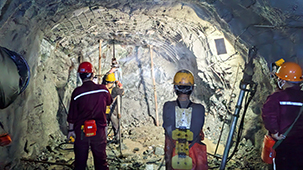
- How Self-Drilling Rock Bolts Enhance Tunnel Support in Fractured Rock?
- Time:2025-08-15From:This Site
- Discover how self-drilling rock bolts enhance tunnel support in fractured rock. Learn their benefits, installation steps, and real-world applications for safe, efficient tunneling.
- View details
-

- Sinorock 2025 Quality Month | Strengthening Quality Foundations, Empowering Product Excellence
- Time:2025-08-13From:This Site
- Sinorock’s 2025 Quality Month, themed “Strengthening Quality Foundations, Empowering Product Excellence,” successfully concluded, reinforcing our commitment to superior product quality.
- View details
-

- Sinorock Safety Month 2025 | Everyone Speaks Safety, Everyone Can Respond
- Time:2025-07-03From:This Site
- Sinorock Safety Month 2025, centered on the theme "Everyone Speaks Safety, Everyone Can Respond - Spot Workplace Hazards," has wrapped up successfully!
- View details
-

- Quality Control: the Vital Factor of A SDA Bolt Factory
- Time:2025-01-09From:This Site
- Sinorock’s comprehensive quality control system, from supplier management to outgoing inspections, ensuring the highest standards for self-drilling anchor bolts in construction.
- View details
-
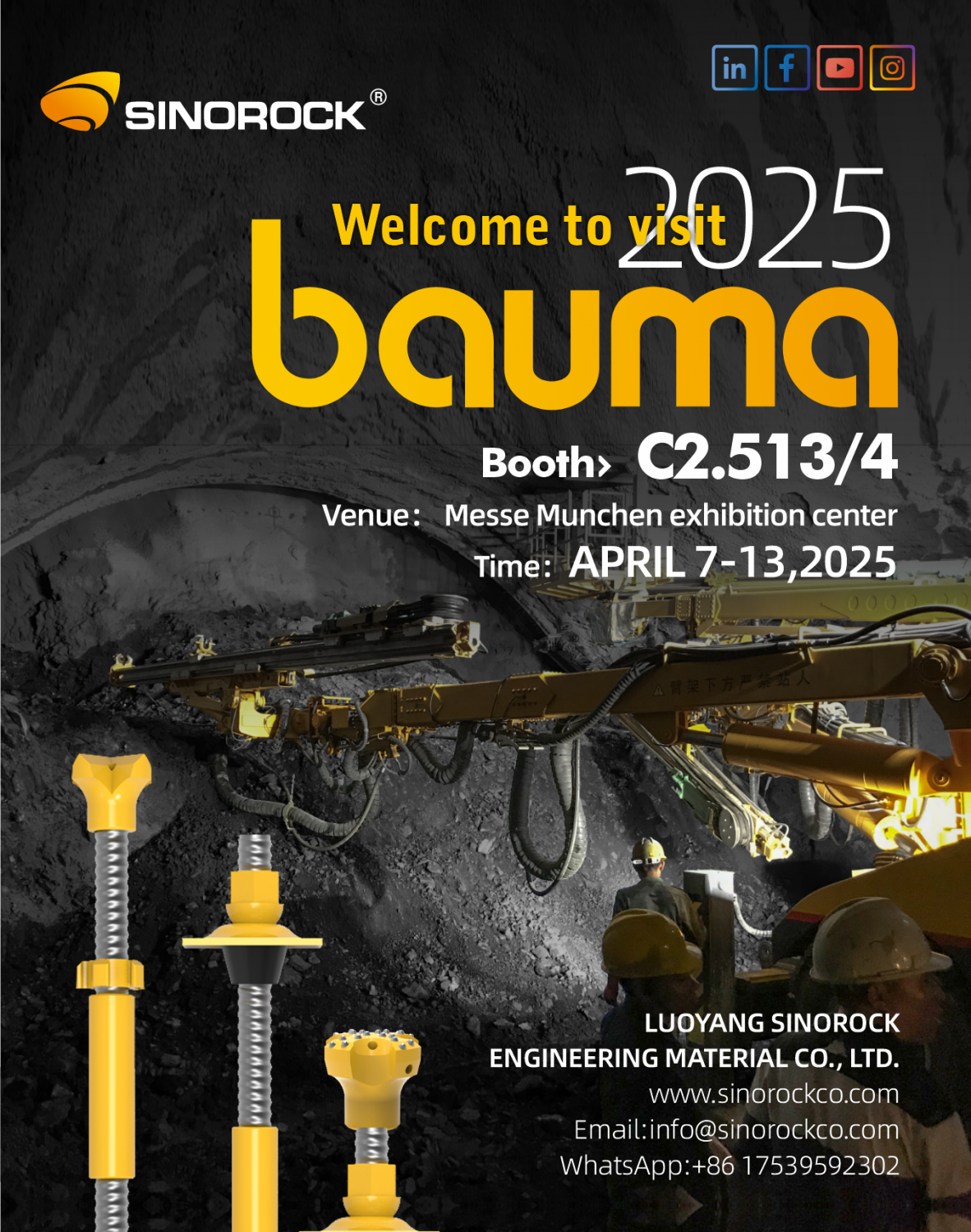
- Sinorock Invites You to Explore Proven Self-Drilling Anchor Bolt Solutions at bauma 2025
- Time:2025-03-07From:This Site
- From April 7–13, 2025, explore Sinorock’s Self-drilling anchor bolt solution at Booth C2.513/4 in Hall C2 of the Messe München Exhibition Center (Munich, Germany).
- View details
-
.jpg)
- SINOROCK to Attend EXPOMINA PERÚ 2024 in Lima, Peru
- Time:2024-08-10From:This Site
- Sinorock to Attend EXPOMINA PERÚ 2024 in Lima, Peru
- View details
-
.jpg)
- SINOROCK to Participate in MINING AND METALS CENTRAL ASIA 2024
- Time:2024-08-08From:This Site
- SINOROCK to Participate in MINING AND METALS CENTRAL ASIA 2024
- View details
 Download
Download 


